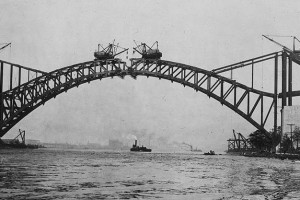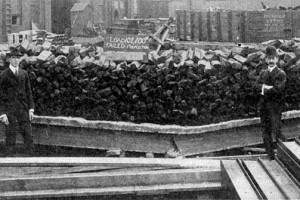Gustav Lindenthal’s New York City Hell Gate Bridge ~1917
Captains steering nineteenth century heavy shipping-traffic remained vigilant when navigating the waterway of the 850-foot wide Hell Gate Sector of New York City’s East River, which is flanked by two Manhattan islands and land eastward in Queens, New York. Notoriously ferocious waters, unexpected currents, and huge rocks lurked below the turbulent surface. Yet this economically essential waterway provided major regional freight operations. …





